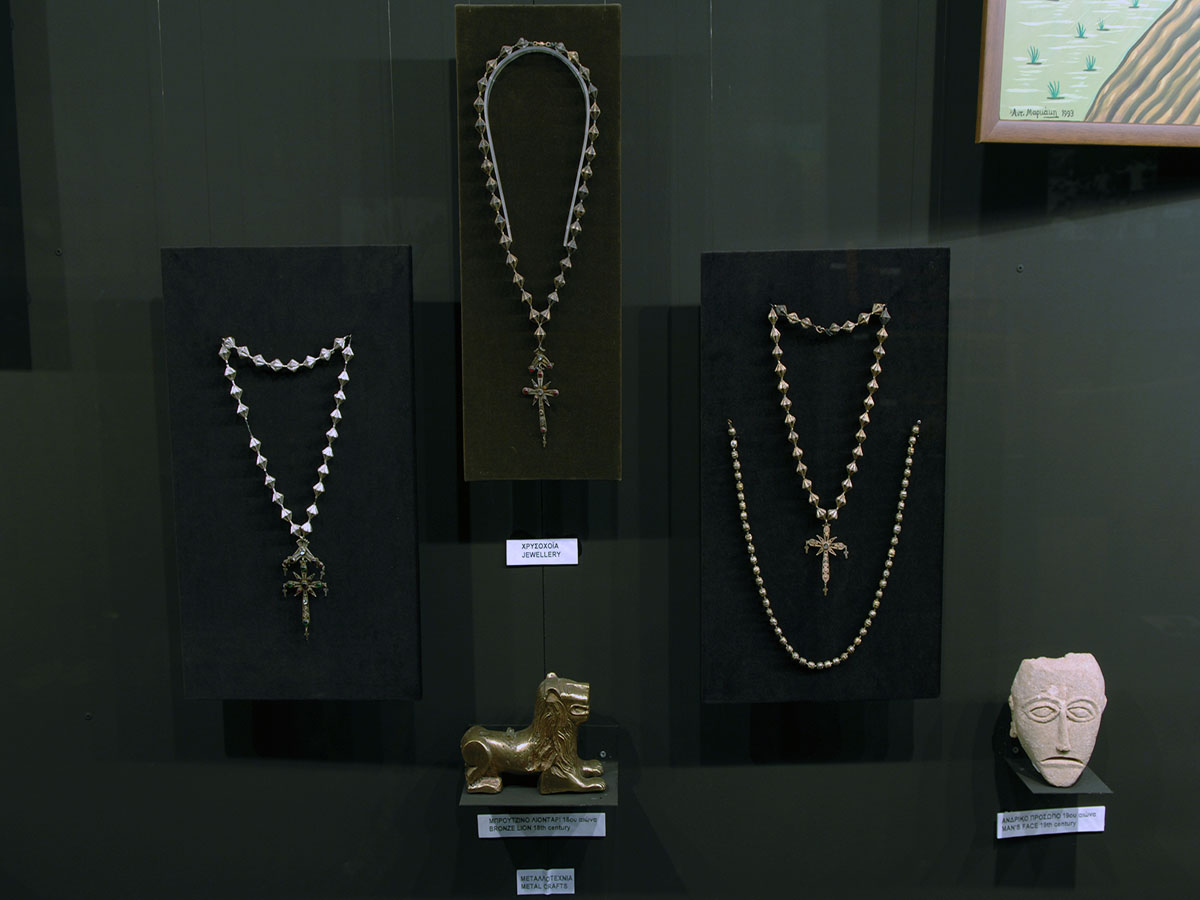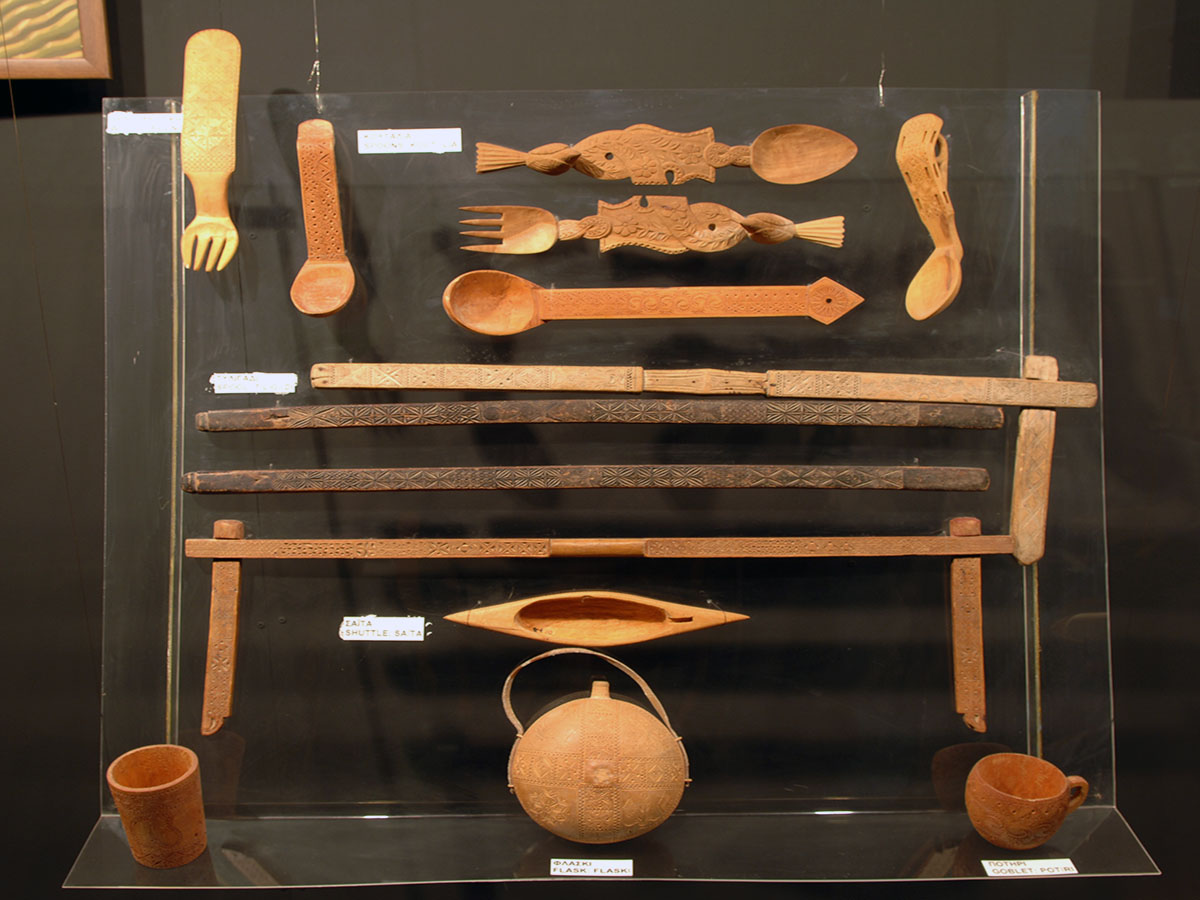Exhibition
Presentation Of Exhibits By Section
Arts
Carving: rural carving is almost non-existent. Woodcarvers and masons learnt their craft from foreign craftsmen. Woodcarvers are divided into “artistic” exponents who decorate rood screens following Byzantine models, and “traditional” craftsmen, who use a typical Cretan geometric design with its roots in antiquity and Byzantium. These woodcarvers are usually shepherds and always from the mountains.

Painting: non-religious painting never existed in Crete, perhaps because the successive periods of occupation did not encourage such luxuries. Over the past few decades a few “naive” folk artists have emerged in rural villages.
Gold and silversmiths: these specialist traditional artisans worked in urban centres and mainly made jewellery for women, silver furnishings for men’s weapons, such as sheaths and sword hilts, and decorative elements of men’s costume. Women’s jewellery follows rigid traditional designs, except for rings and earrings which are Venetian-influenced and which the artisan may design more freely. Unmarried women’s necklaces are composed of a series of small gold balls and called “botonia” (probably from the Italian bottone). At the wedding, the groom gives the bride a necklace with a gold filigree cross and a row of gold lozenges in a style known as “abrakami”.

